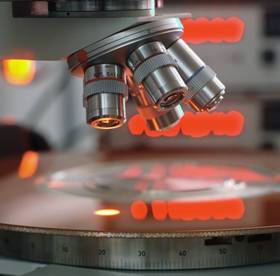 Secondly, the analysis of three major economic areas (Europe, the US, and Japan) highlights significant international differences in the extent to which patent systems fulfill their objectives. The patent selection process at the USPTO is less rigorous and transparent than at the EPO, as evidenced by the soft, flexible identification of prior art, and the lower degree of inventiveness required – inducements to a patent-rich IP strategy. This lower level of rigor and transparency, coupled with low fees, has led to an unmatched and unprecedented number of yearly applications, and to patents of questionable quality being put into force (nearly 50 million claims) in the US market – raising the bar for increasing patent litigation.
Secondly, the analysis of three major economic areas (Europe, the US, and Japan) highlights significant international differences in the extent to which patent systems fulfill their objectives. The patent selection process at the USPTO is less rigorous and transparent than at the EPO, as evidenced by the soft, flexible identification of prior art, and the lower degree of inventiveness required – inducements to a patent-rich IP strategy. This lower level of rigor and transparency, coupled with low fees, has led to an unmatched and unprecedented number of yearly applications, and to patents of questionable quality being put into force (nearly 50 million claims) in the US market – raising the bar for increasing patent litigation.
There appear to be fewer divergences in terms of the legal standards that set the patentability conditions than in terms of operational design, which include the education and experience of examiners, their incentives, their workloads, and operational routines, such as requests for examination, the opposition process, publication of search reports, or the ease of adapting the scope of protection through claim changes or the filing of continuation-in-part (CIP) applications for intellectual-property rights.
A stylized fact that emerges from the patent-office data analysis is that there is a much higher propensity to file patents at the USPTO than at the EPO or JPO. In other words, the average patent granted by the USPTO provides a larger scope of protection than the average patent granted by the JPO. The demand for patents at the EPO is 51% of the demand at the USPTO (38% in terms of claims). Although the JPO and USPTO file a similar number of patents, the number of claims filed in Japan falls to 33% of the US level because of a smaller coverage of patents in Japan. In other words, the demand for patent rights as part of an IP strategy, as measured by the number of claims filed, is much higher at the USPTO than at the EPO or JPO, which both receive less than 40% of the USPTO yearly workload.
Another stylized fact that can be drawn from the data is that examination fees are larger in Europe. The cumulative fees for an average patent are more than four times higher at the EPO than at the USPTO. In the EU, additional translation costs into national languages, and patent renewal fees in national markets, further increase the difference in a firm’s cost for patent filing. However, both the fees per claim and budget per claim yield the conclusion that the EPO and the JPO allocate two to three times more examination resources per patent or per claim than the USPTO.
A third stylized fact is that examiners at the USPTO process more patent applications than at the EPO or JPO. Whether in terms of incoming workload per examiner, or outgoing granted claims per examiner, the average USPTO examiner processes at least two times more patents or claims each year than the average EPO or JPO examiner. The above measures of workload or productivity do not seem to be positively correlated with incentives.
Another stylized fact is that EU and Japanese patent offices offer more attractive compensations to their examiners. In 2008, a typical USPTO examiner earned a civil servant GS12 (step 5) gross salary of about 87,000 USD with some 24% locality adjustments that are subject to federal and state taxation. By contrast, the EPO offers one of the most comprehensive and family-friendly benefits packages in Europe. The EPO offer comprises an internationally-competitive basic salary that is exempt from national income tax. The 2009 gross salary for an A4 step 2 examiner (there are 7 grades under the president, and 13 steps per grade) is about 120,000 EUR (or about 160,000 USD), and is not subject to state taxation.
In Japan, a 35-year-old examiner, married with one child, would earn more than 7 million YEN (or 81,772 USD) per year, subject to taxation. Such a JPO examiner also receives insurance packages and support for lodging expenses (through dormitory facilities or financial allowance for apartment rental for up to 334,000 YEN each year).
In a perfect labor market, the fact that EPO examiners process a smaller amount of patent applications, and are better paid, implies that the EPO gives more time and more incentives to their examiners, and that it allows for a higher quality in the patent-examination process. This conclusion is corroborated by the staff turnovers and job experience in each office. Indeed, whereas the EPO and the JPO have a very small staff turnover, the USPTO has an annual staff turnover of about 30% in 2008. Although this difference can be partly explained by more attractive compensation packages, it also provides evidence of much longer job experience for EPO or JPO examiners.
The above stylized facts establish that the EPO processes fewer patents and claims per capita and per examiner, pays higher compensations, and provides a better patent quality.
In Europe, more restrictions on patentable subject matters, higher rigor in the identification of prior art, stricter evaluations of inventiveness, and high fees translate into a significantly lower number of patent applications than at the USPTO, and fewer patents being in force for potential patent litigation in the market (approximately eight million claims are in force in Europe). Japan is in an intermediate position.
van Pottelsberghe believes that there is a basis for the assertion by others who attribute the decline in patent standards largely to the sharp rise in patent applications on products and processes in new subject areas for which the USPTO has limited expertise or access to prior art. He asserts that the reverse causality is probably even stronger: lower standards induce more applications as part of an overall IP strategy because it is easier to get a patent granted. A vicious cycle therefore arises in which lax patent standards induce more applications, which in turn further reduce quality standards, as examiners become overloaded.
This is the main hypothesis put forward to explain the “broken” patent system in the US. Policymakers at large (politicians, patent offices, judges) stand accused of designing the patent system in such a way that its current plight of an ever-growing number of patent filings of uncertain quality was inevitable. The recent ratification of a sweeping patent-reform act (Leahy-Smith America Invents Act, or AIA) in the US has been criticized by many as going too far in some aspects, and not far enough in others.
One important policy implication concerns ongoing attempts to converge toward a global patent system for intellectual-property rights, whereby the largest patent offices would enter into work-sharing, and eventually a mutual-recognition process in which a patent granted by office Y would be automatically granted by office Z. This desire for cooperation is evidenced by the growing number of bilateral Patent Prosecution Highway (PPH) pilot projects signed and operated by the USPTO, EPO, JPO, and several other national patent offices in Europe and Asia.
Under the PPH, a patent office Z that receives a search report or examination report made by another patent office Y, must perform its own search and examination reports much faster than would be required for a regular application. However, this work-sharing process (embedded with some sort of mutual recognition) can harm the patent system of country Z if the degree of quality in patent office Y is manifestly lower. This issue is particularly relevant for EPO examiners, who have a legal duty to perform a search and produce a relevant search report themselves as mentioned above.

